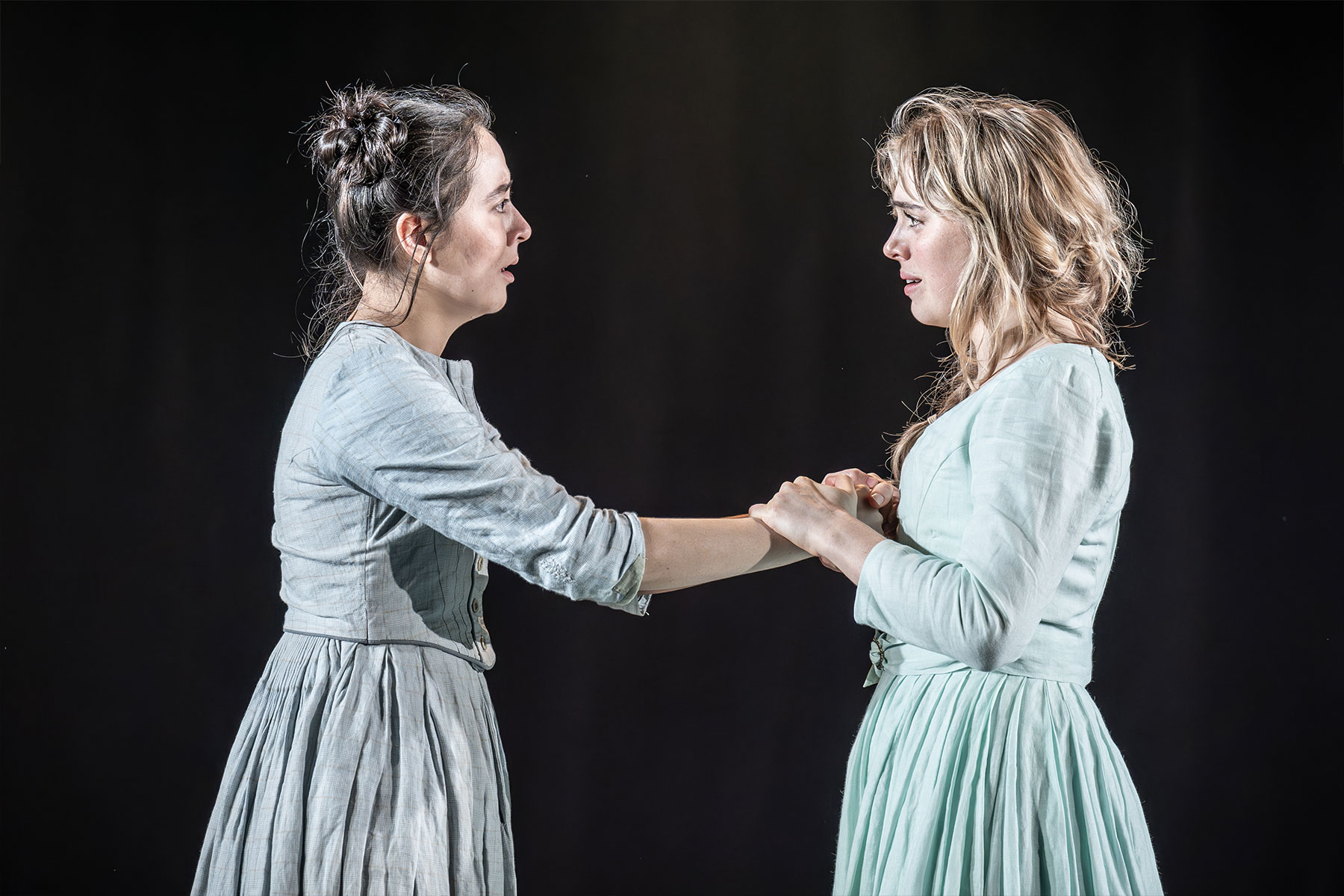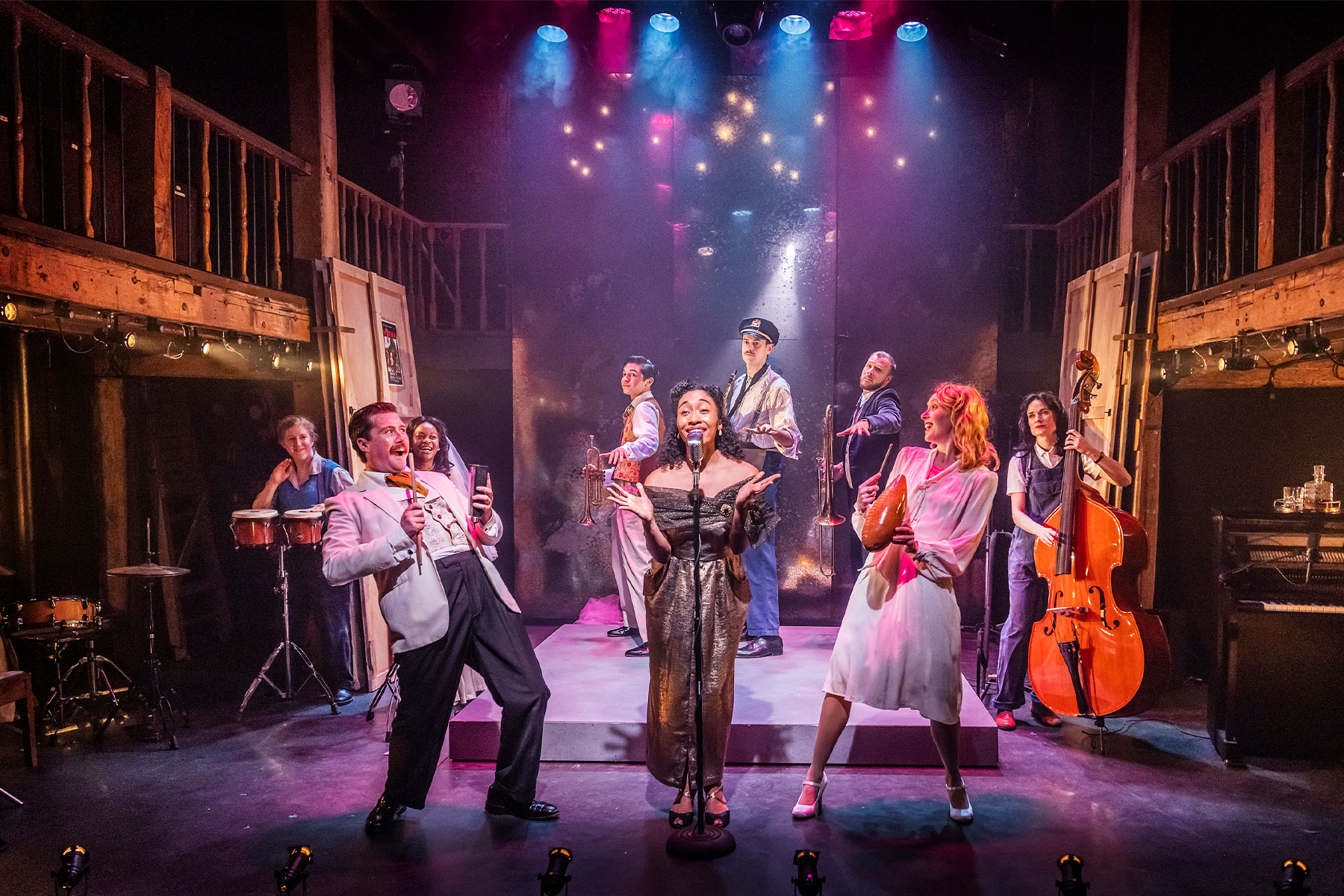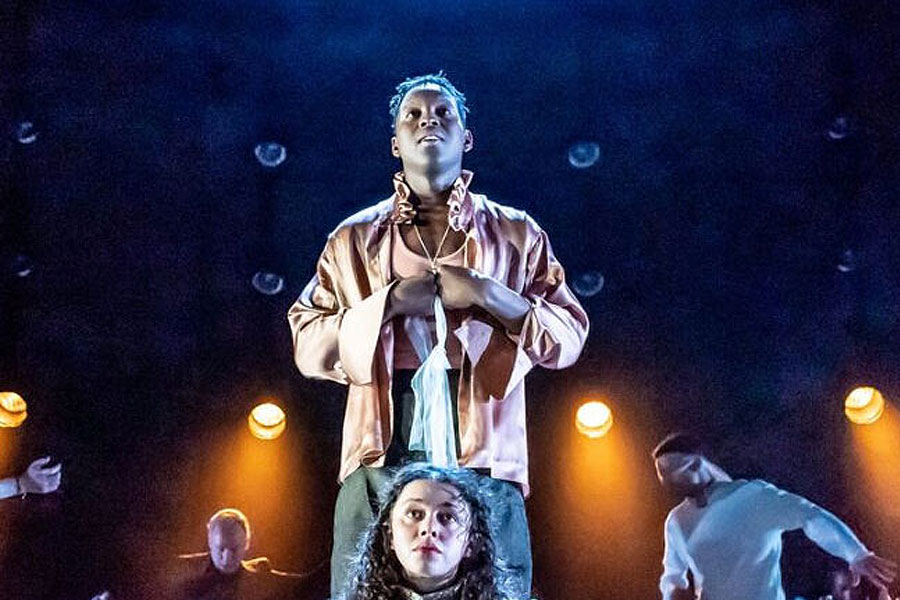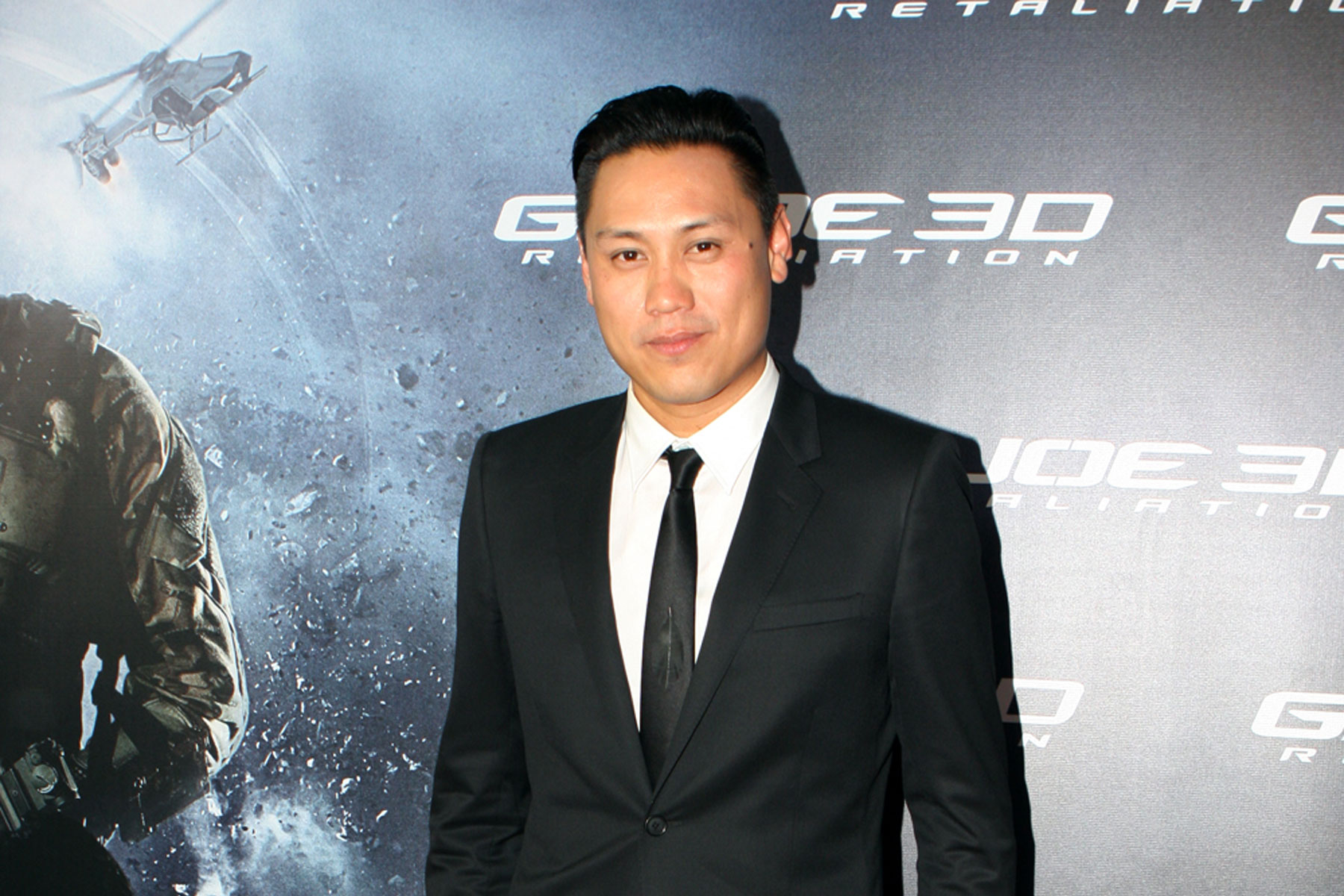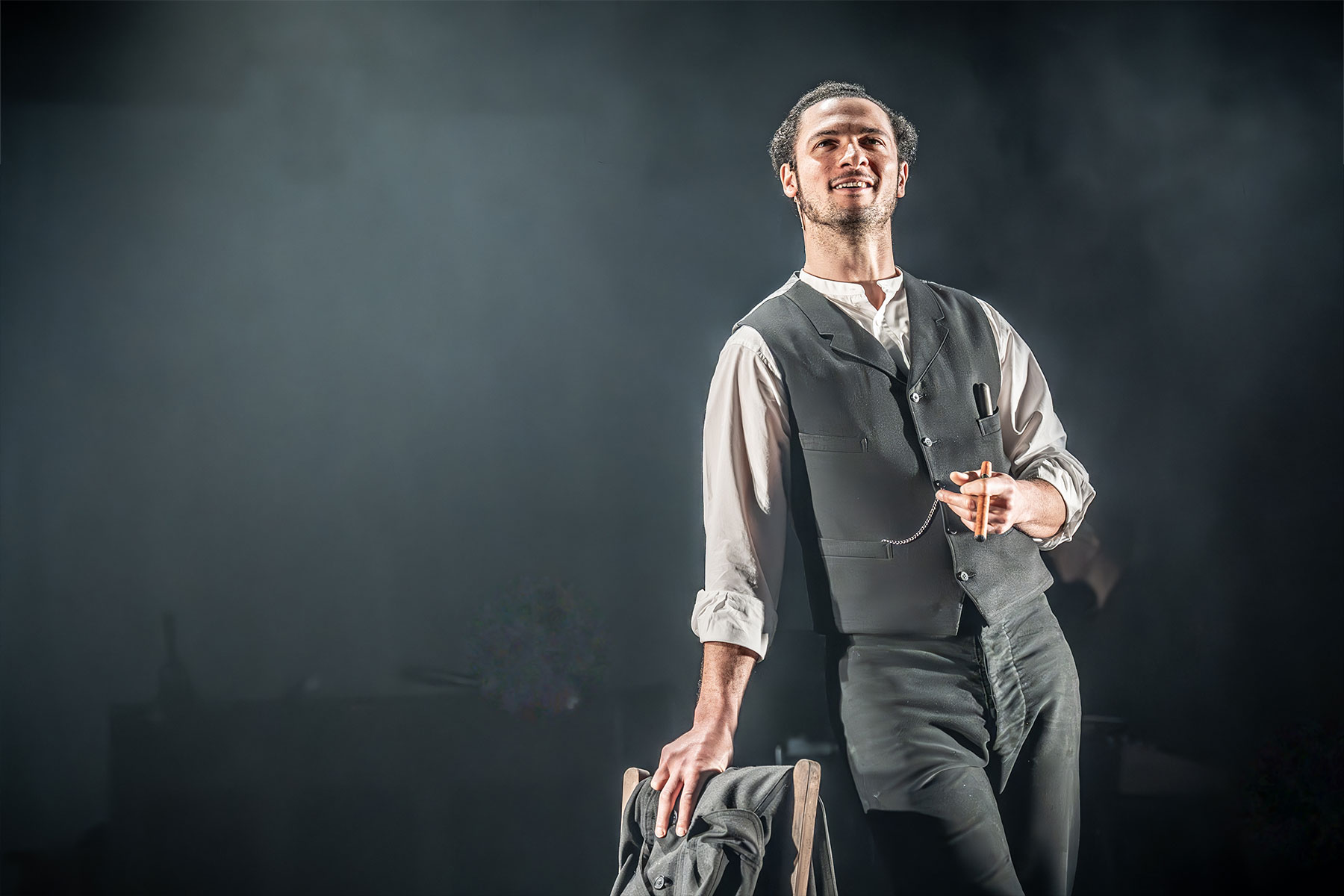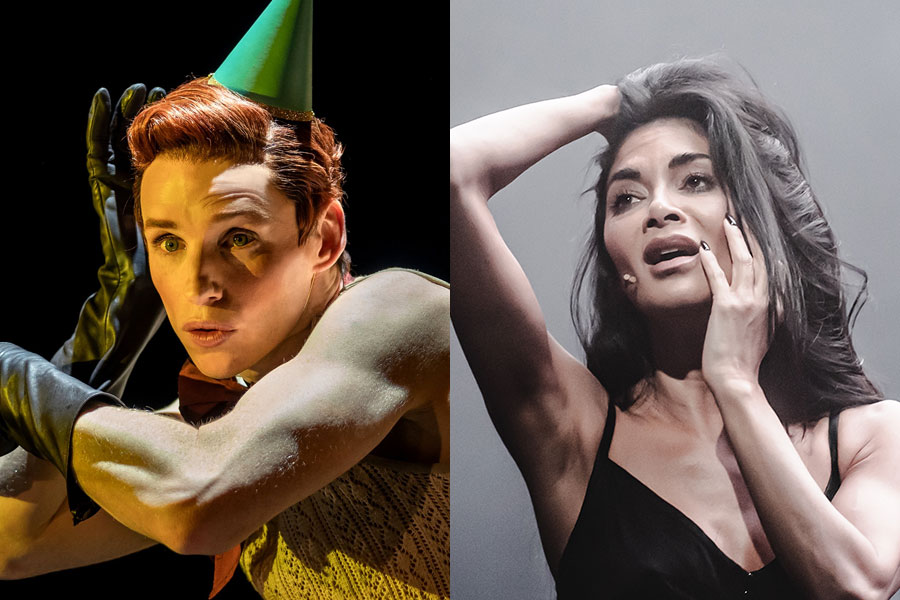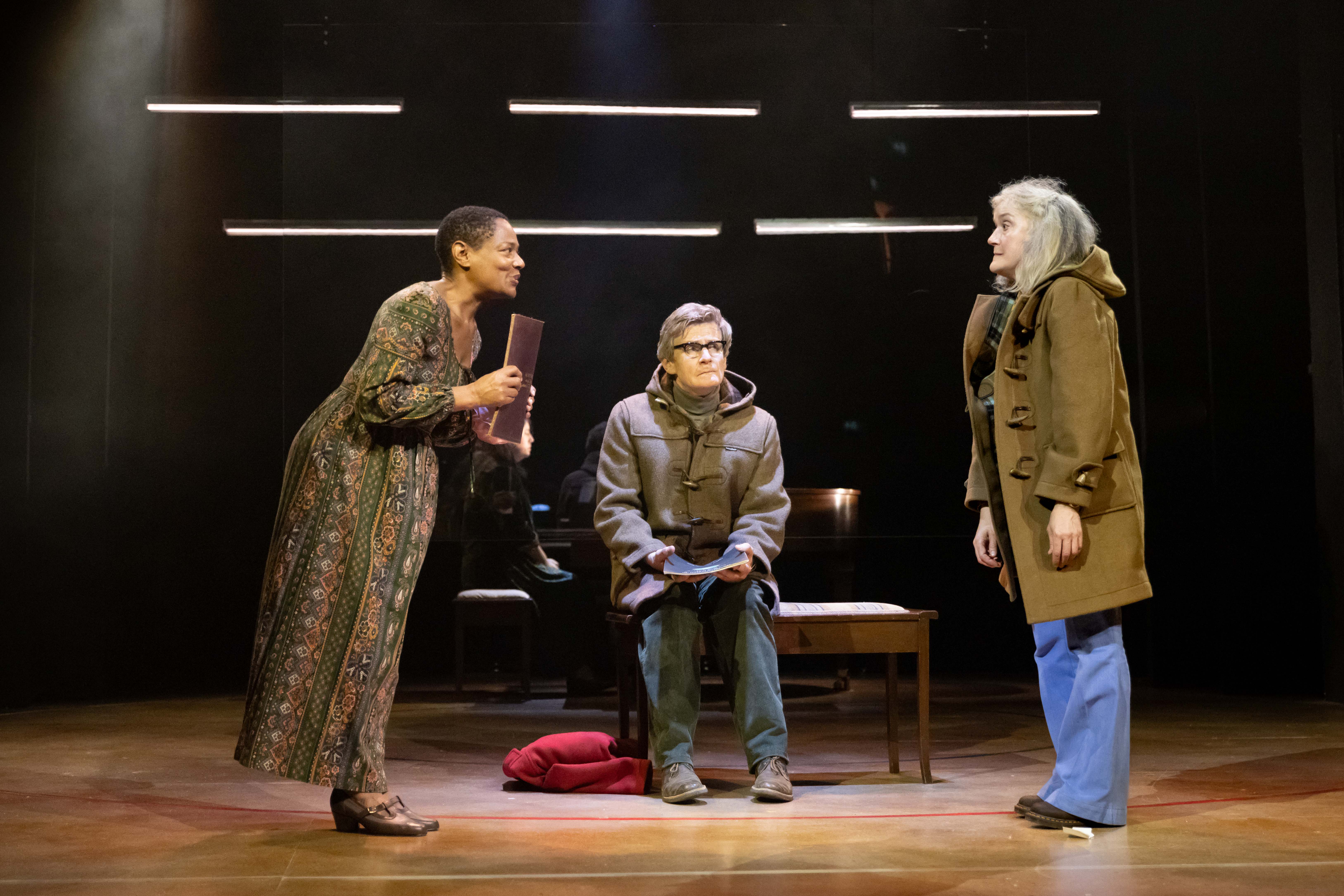The Shape of Things
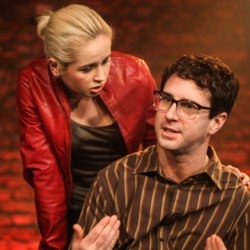
© Maximilien Spielbichler
What counts as art? This question, which sits at the heart of Neil LaBute’s dark comedy, could not be much timelier. Just two days ago, the winner of this year’s Turner Prize was announced, while former Turner Prize winner Grayson Perry recently reignited the debate about contemporary art in his lively Reith Lectures. While LaBute’s 2001 play has much to contribute to these conversations, however, this new production at the Arcola Theatre offers an all too shallow investigation of superficiality.
In The Shape of Things, life itself becomes art. Following an encounter in a museum, art student Evelyn begins to apply her paintbrush to awkward, geeky Adam, gradually transforming him through the power of suggestion. He begins to eat better, dress better, work out. With each seductive whisper from Evelyn, Adam increasingly resembles the chiselled statue that the pair first met in front of, slowly becoming a human masterpiece. His transformations do not go unnoticed by his friends Philip and Jenny, whose own relationship soon becomes messily tangled up with the unlikely pairing of Adam and Evelyn.
As Adam’s striking outward metamorphosis suggests, LaBute’s play is preoccupied with facade and our modern obsession with surface. This preoccupation seems to dominate Samuel Miller’s direction, in which artificiality is brought to the fore of the visual and performance aesthetic. This production offers all the overblown colour and cartoonish theatrics of pop art, but without the knowing intelligence and hard edges of irony. The often heightened acting style comes across as clumsy rather than interestingly exploring the idea of artifice, with the shrill arguments and overdone gags overwhelming the intimate space of the Arcola’s studio.
There are hints of something more interesting in Takis’ design, which equally attempts to grapple with LaBute’s key themes of art, artifice and transformation. The pointedly fake and garishly bright sculpture of the opening scene is slowly dismantled throughout, its anatomy dissected and repurposed as pieces of furniture, presenting a visual representation of the changes that Adam is coaxed into by Evelyn. The physical line that Evelyn steps over in the museum at the beginning also remains fixed to the stage, standing in for all the other lines that are subsequently crossed by the characters. Again, though, it is brash without brilliance, its insights not quite intelligent enough to make up for its lack of subtlety.
It is this absence of subtlety in almost all areas of the production that is its central problem, barring an audience from both engagement and distance. LaBute’s characters are known for being selfish and often cruel creatures, their calculating or inadvertent callousness presenting potential difficulties for directors and actors. By refusing to opt for either delicately naturalistic complexity or pointed caricatures, Miller and his creative team offer us an unappealing quartet of individuals who are awkwardly caught between emotional truth and artful fakery. As a result, we – like Evelyn – are left frustratedly trying to extract the truth from the art.
The Shape of Things continues at the Arcola Theatre until 21 December.



